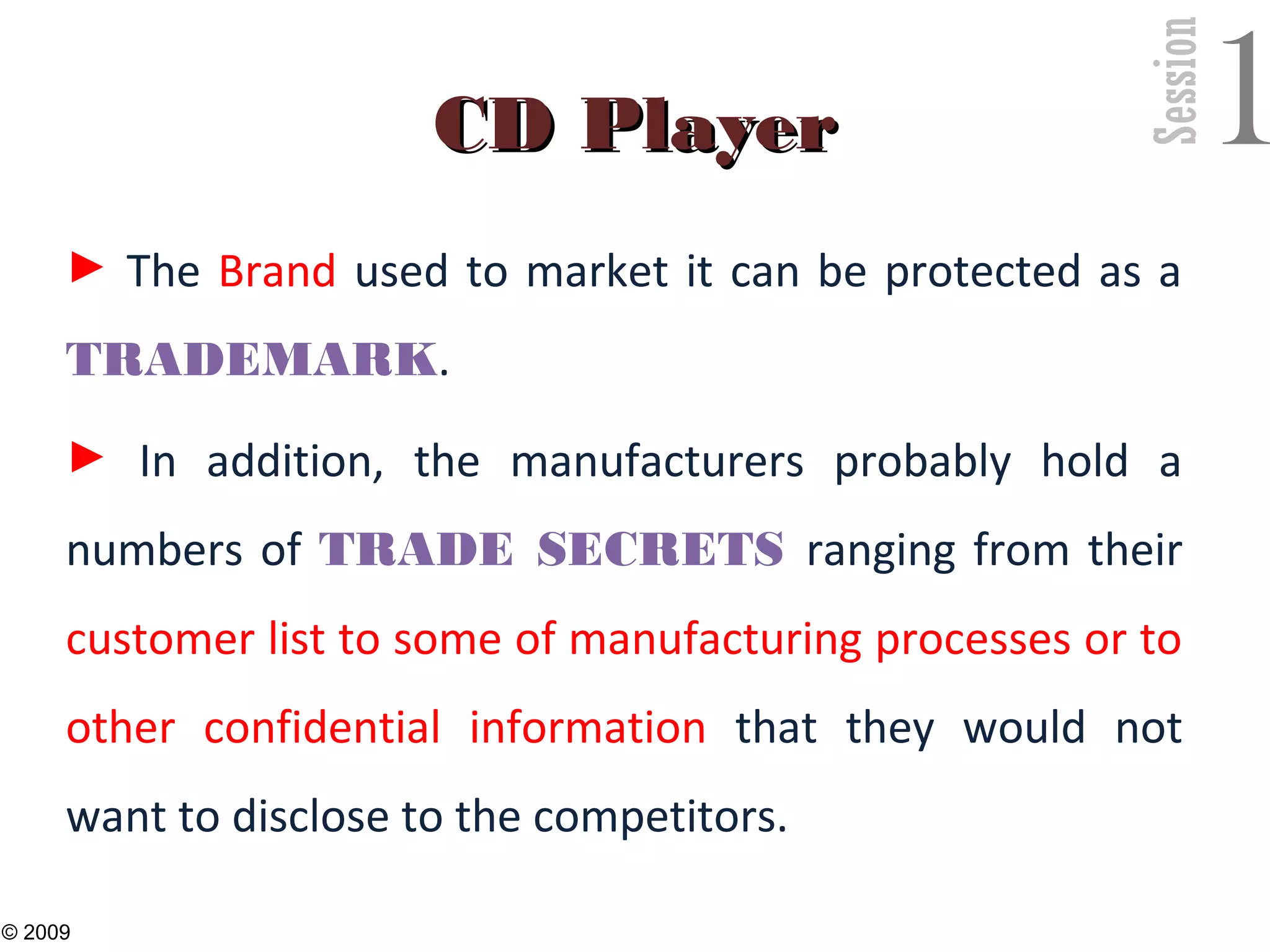The document discusses intellectual property (IP), which refers to creations of the human mind such as inventions, literary and artistic works, designs, symbols, names, and images. IP is intangible property that arises from human intellectual effort. Some key types of IP discussed include patents, which protect inventions; trademarks, which protect signs used to distinguish goods/services; industrial designs, which protect aesthetic designs; and copyright, which protects literary and artistic works. The document also notes that a single product can be protected by multiple IP rights that restrict how the design, brand name, software, and other elements can be used by others.





























